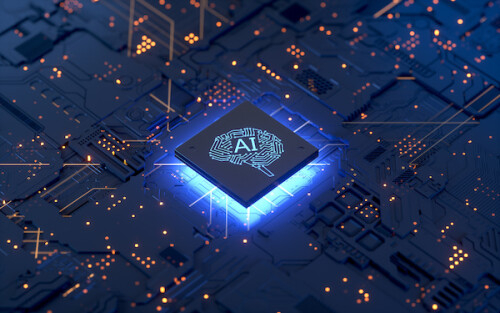Navigating AI & Cybersecurity: Challenges and Opportunities
In this blog, our team of experts have put their heads together to profile the double-edged sword that is AI in cybersecurity, exploring both the challenges and possibilities it opens up.
AI technology has been fermenting in different ways for decades, it’s just that now the lid’s popped off.
But what even is AI technology?
Let’s find out!
A key point before we get further is that the term “AI” is a very hazy one. The difficulty lies in how hard “intelligence” is to pin down. The “intelligence” of sci-fi creations like WALL-E, HAL 9000, and the Terminator are examples of Artificial General Intelligence (AGI). That is, intelligence that behaves in a human-like way, is able to learn, able to maintain interaction, and so on.
AGI is a fun concept but, as The Terminator taught us, it’s actually not all that effective to create a full intelligence and give it a specific task.
So, when companies use the term “AI”, it gives the impression that there are artificial, fully sentient experts working at the speed of light to do whatever you want them to do. What they actually mean is that some software has been developed to do specific tasks in efficient ways.
By focusing on specific tasks, it’s much easier to make a program able to make the right decisions more dependably. So here are some great AI technologies that you may not have even considered.
Like with all new technologies, Face ID for smartphones was met with a strong mixture of excitement and fear but, for better or for worse, facial recognition has come a huge way in the last few years.
While the potential for misuse is certainly there, it also allows for much faster interaction with tech in a medium secure way. And this doesn’t just apply to smartphones: office security systems, border control, and domestic security all benefit from efficient verification.

This is the flashiest of the AI technologies. Chatbots used to have to be purposely written by a programmer to give specific answers to questions. This, of course, was a hugely tedious process that resulted in everyone wasting hours of time trying to get around “I’m sorry, I didn’t quite understand that question”.
But ChatGPT and other generative language models are making the interaction part of the process much smoother. By essentially downloading the whole internet and training the model on all the text on it, developers have created software that is able to convincingly respond to inputs.
The core issue here is that these models are only modelling language convincingly. And this is likely to be a contentious point, they give the impression of thought because we’re so used to expressing thought in language. But they’re only ever giving what they’ve been trained to consider the “correct” response to a given input. This definition of what’s “correct” has usually been “what is a convincing response”. The downside here is that, often, this will simply mean that they’ll fabricate information for the sake of answering the question convincingly.
ChatGPT isn’t a replacement for thinking, but it can certainly help people formulate writing.
Self-driving cars are still reasonably dangerous tech, but they’ve come an impressive distance in the last 5 years. The variability of roads, conditions, and considerations has made it a real task to program the “correct” responses to everything. In fact, it’s impossible to manually code every “correct” response. Instead, developers have made use of increases in processor technology to be able to process types of input much more effectively.
You may have seen those terrifying robot dog videos from Boston Dynamics. These make use of similar technology to help them navigate surroundings and avoid obstacles – ostensibly for the purposes of disaster relief. They can be remote controlled or put into an autonomous mode, which potentially makes them very useful tools for a variety of purposes (some of which are very scary). But the AI-navigation elements can be considered in the same way as controlling a video game character: you don’t have to manually move each leg to avoid falling over or you’d never get to the actual game part.

A more mundane example is autocorrect for smartphone keyboards. Surprisingly, autocorrect actually started in the 70s with the Chinese government trying to develop ways to adapt Mandarin for newly emerging tech. They quickly realised that, without being able to reliably interact with high tech typewriters and early computers, they’d be left behind the Latin-Alphabet world in terms of technology. The question was whether to develop a new Latin-based alphabet for the language, or to adapt the tech. They, clearly, went with the latter – though there’s always give and take.
Autocorrect now makes everyone’s lives much easier – correcting spelling mistakes in professional emails, to helpfully autocorrecting “duck” to something else in the extended family WhatsApp chat.
Especially helpful for people with visual impairments, being able to navigate the internet independently is a huge benefit. Early text to speech had a noticeably stilted “Hello. I am. [Not a Robot] what can I. HELP. You with today” style of speaking. This came from the way the tech was developed. Programmers would have to chop bits of actual recorded sound into segments and then have those segments play according to the text cues given.
More recently, however, generative text to speech has resulted in really convincing reading. Generative text-to-speech essentially works by recording a certain number of core phrases in a language, then generating variations through a machine learning algorithm. It’s this that allows the Siris and Alexas to respond usefully to inputs without programmers having to anticipate every possible question.
While doctors train for specialist roles to know when to make certain calls. Some AI programs have helped assist diagnoses through doing what computers do best: crunching data & responding to regular queries. A doctor’s skill relies on their breadth of knowledge – drawing from experience & learning to follow certain intuitions. AI doesn’t remove doctors, but helps to supplement the knowledge banks by testing symptoms against known causes to help the process of elimination.
AI is everything to everyone, but you don’t need to get stuck in the swamp – let’s talk about updating your organisation’s systems and keeping your IT security watertight.
If you wish to upgrade your legacy systems and keep up to date with the latest technology and compliance regulations, speak to our team of IT support experts today or keep up with our blog for the latest strategic IT insights.

In this blog, our team of experts have put their heads together to profile the double-edged sword that is AI in cybersecurity, exploring both the challenges and possibilities it opens up.

In today's digital landscape, where connectivity and innovation reign supreme, the security of your business's (and customers’) information is of the utmost importance. As technology evolves, so too does cybercrime. Opportunists and organised criminals are always on the lookout for ways to exploit vulnerabilities and gain unauthorised access to your valuable data.
By clicking “Accept all cookies”, you agree ITRM can store cookies on your device and disclose information in accordance with our Cookie Policy.
When you visit any of our websites, it may store or retrieve information on your browser, mostly in the form of cookies. This information might be about you, your preferences or your device and is mostly used to make the site work as you expect it to. The information does not usually directly identify you, but it can give you a more personalized web experience. Because we respect your right to privacy, you can choose not to allow some types of cookies. Click on the different category headings to find out more and manage your preferences. Please note, blocking some types of cookies may impact your experience of the site and the services we are able to offer.